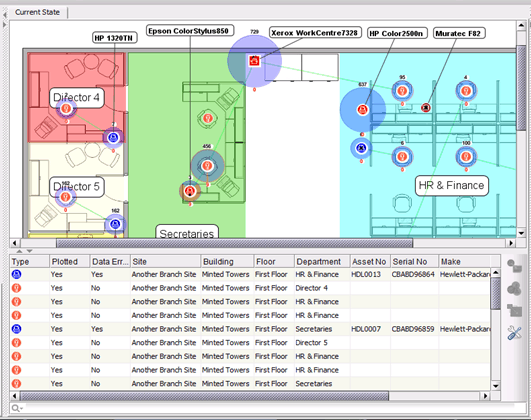 Despite decades of discussion around the “paperless school,” the reality is that good, old-fashioned printing is still common in districts and schools. Printing expenses, often the second highest district and school expense, can eat up as much as 10% of a school budget. For all sizes of district, this represents a clear opportunity for cost control and waste reduction. In addition, print downtime can have a negative impact on classroom operations, whether in-person or virtual.
Despite decades of discussion around the “paperless school,” the reality is that good, old-fashioned printing is still common in districts and schools. Printing expenses, often the second highest district and school expense, can eat up as much as 10% of a school budget. For all sizes of district, this represents a clear opportunity for cost control and waste reduction. In addition, print downtime can have a negative impact on classroom operations, whether in-person or virtual.
An effective print strategy calls for assessing your district’s needs and resources, weighing all of the costs, risks, benefits and limitations of your printer fleet, and developing a plan that will help you get the most out of your print technology. Many of these components are must-haves for every district and may be realized without adding a huge burden. To achieve the maximum benefit, identify dedicated, expert print resources, inside or outside your organization.
Measure Print Costs
Many districts and schools don’t track their total annual print costs in detail—as long as they’re under budget, it’s all good. However, sometimes that means necessary pages can’t be printed toward the end of the school year as the budget ticks down. A good print strategy begins with a clear understanding of print costs, including missed print opportunities that would help instruction.
 Don’t just go by the average numbers listed in the graphic above; investigate your district’s current costs. Once you have a clear idea of the current costs and missed instructional opportunities, you can create a strategy based on data.
Don’t just go by the average numbers listed in the graphic above; investigate your district’s current costs. Once you have a clear idea of the current costs and missed instructional opportunities, you can create a strategy based on data.
Write an Effective Print Policy
Print policies cover a wide range of topics, such as ownership of print strategy (typically an IT resource), print device acquisition and placement authority, access to color printing, and requirements for duplex printing. The larger a district becomes, the higher the stakes, and the greater the need for a clear, well-communicated policy. Even smaller districts who may not need a formal print policy can still benefit from a policy planning exercise.
Limit Waste
Studies show that as much as 40% of printed output—such as printing emails and “banner pages”—is unnecessary. Use printer settings to turn off banner pages, use “print release” functions, or reduce toner density. You can also deploy tools that monitor and manage print behavior, for example, detecting anomalies in printing on a particular device or by a specific user.
Create a Device Acquisition Strategy
A consistent device acquisition strategy includes setting usage and personnel thresholds (e.g., how busy are existing printers, who uses them, and when does growth or demand call for another device), selecting approved printer models via a sourcing protocol, and communicating the strategy to everyone with purchase authority. Forgoing these steps results in an environment with too many device models and related consumable parts, as well as unnecessarily high support labor and other expenses. High-cost consumables for “cheap” devices drive up total cost of ownership over time.
Device Placement Strategy
Device acquisition strategies must include determining the physical location of print devices. Optimized, cost-controlled environments carefully consider the number of steps staff must take to access print. It is vital to balance device propagation against educator and office staff productivity.

Consumables Replenishment Strategy
A device acquisition strategy also takes into account consumables management and costs. Key elements include designating who buys toner or inkjet cartridges and in what quantities, where consumables are located, and when reorders should take place. Having a wide variety of models requires that you stock an abundance of consumables to prevent downtime. But if you limit your environment to fewer models, you can more easily manage a narrower range of consumables. Some skilled print management providers use sophisticated software to monitor levels and deliver consumables on a just-in-time basis, which prevents over-stocking.
Set Up a Consistent Service and Support Model
A forward-looking district recognizes the longer-term value and ROI of business-class devices and that keeping them well maintained over the long term is part of the cost of operations. Proactive service and prompt onsite service response can also dramatically reduce downtime, as well as accelerate recovery. You’ll need to identify (or outsource) resources who can own proactive, consistent support and service across all locations, define a maintenance schedule, and determine a service-level commitment that you can balance against the cost to staff that need.
Enact Security Policies and Procedures
Printers and multi-function devices are becoming increasingly more sophisticated—and at the same time, more vulnerable to security threats. Many include disk drives (that store printed information) and even embedded web servers. These electronic gateways—along with the physical security of printed output—make security management a top concern for print environments and a necessary part of a good print strategy.
Security steps include a combination of rules (who can print what, where, and when), software (secure print settings, locking out roles from specific printers, monitoring tools, etc.), and device placement policy, in addition to any overall network cybersecurity plans and policies.
Maximize Sustainability
Strategic print management practices directly support sustainability:
- Controlling device propagation reduces power consumption.
- Managing printed output reduces waste.
- Deploying business-class devices produces fewer spent consumables.
Complete the circle by introducing a consumables recycling program.
Schedule Strategy Check-ups
The best print strategy includes a regular consultation with dedicated print management resources. Armed with the proper data, these experts can guide a district in executing a print strategy to achieve less downtime, reduced security exposure, and controlled costs.
Start Developing Your Print Strategy
Move out of reactive mode! You don’t have to do it alone—leverage our industry-leading tools, experienced field service technicians, and prompt remote and onsite service capabilities.


Social
View our latest posts or connect with us below on Social Media.